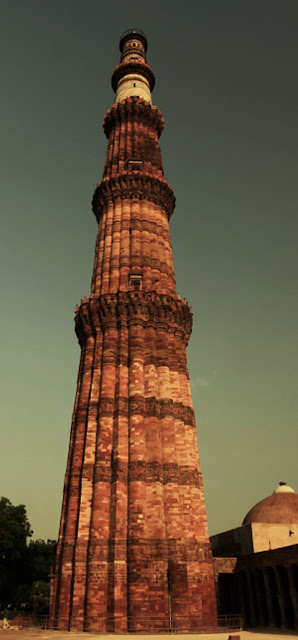Development of Indo-Islamic Art and Architecture in India
The beginning of Islamic architecture is the tale of the Muslim invasion in India which to a great extent reshaped the whole architectural element of India. The earliest attack in India took place in the 8th century, when much of the lower Indus territories came under the power of the Caliphs of Baghdad, the Arab invaders.
Development of Indo-Islamic Art and Architecture in India
This invasion marked the very beginning of the Islamic architecture. The introduction of the glazed tile decoration by the Arabs contoured the initial architectural development of the Islamic architecture. The second attack occurred in the first half of the 12th century, much later than the first attack.
Muslim Invasion in India
The Ghaznis from Afghanistan attacked Punjab from the way to Lahore, the undivided city of India, where a viceroy occupied an important group of palaces and government building for his purpose; however, these were completely destroyed by the prince of Ghor in the same century. There are a few definite records present in the old Punjab region.
The ruins of ancient brick and timbered structures provide the clue of the style of buildings that then succeeded Wooden doors and doorways along with the ornamental elements persisted and were incorporated not infrequently in the Indo-Islamic art which developed shortly afterwards.
Explain the five features of indo-islamic architecture
Muslim structures can be classified under two types- religions and secular. Religious structures are mosques, tombs and mausoleums. Secular ones are forts, palaces, gateways and gardens. The silent features of Muslim architecture are as follows
- Large buildings
- Open courtyards
- Mosques: An open courtyard with a pillared verandah around, a sanctuary near the wall facing Mecca, a pulpit and a minaret above the wall to summon people to prayer. The sanctuary has a large dome above it.
- Bulbous domes Tall and slender minarets (Minar)
- Arched gateways made beautiful with geometric, arabesque designs and calligraphic inscriptions.
- Use of coloured stone and glazed tiles.
- Tomb architecture
- Huzrah- a solitary compartment or tomb chamber.
- Cenotaph- center of Huzrah.
The Sultanate Period Art
The Delhi or the imperial style of Indo Islamic architecture flourished between AD 1191-1557 and covered the Muslim dynasties viz., the Slaves dynasty (1191-1246), Khiljis (1290-1320), Tughluqe (1320-1413), Sayyids (1414-1444) and the Lodis (1451-1557).
The first Islamic Sultanate structures were built of disparate dismantled pieces of Hindu Temples, after which came an era of carefully planned structures and precincts, later assimilating and incorporating Hindu elements and workmanship.
Important Monuments
The Quwwat-ul-Islam Masjid it was built by Qutubuddin Aibak and it is considered as the earliest mosque in India. The Mosque has beautiful Islamic calligraphy, the arabesque designs and pillars with pre-Islamic Hindu motifs. Later, its construction was extended by iltutmish.
Qutub Minar

The construction of this was started by Qutubuddin Aibak in 1192 which was eventually completed by Iltutmish in 1230. The Qutub Minar, built to commemorate the entry of Islam, was essentially a victory tower, decorated with several calligraphic inscriptions. The diameter of the Qutub Minar is 14.32m at the base and about 2.75 at the top. It measures a height of 72.5m and contains a spiral staircase of 379 steps.
Adhai-din-ka-Jhopra
It was also built by Qutubuddin Aibak in AD 1153 and was converted into mosque in AD 1198. It is located in the Ajmer district of Rajasthan.
Alai Darwaza
It was built by Allauddin Khilji. It is well decorated, and served as an entrance gateway to the Mosque at the Qutub complex, marking the evolution of another innovative feature in the Indo-Islamic architecture.